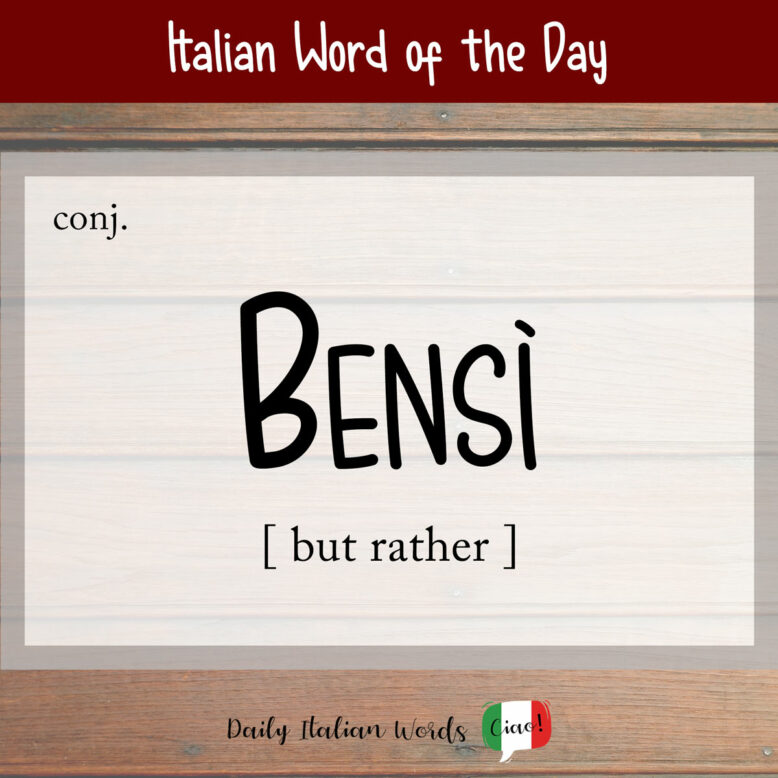If you have started reading more advanced material in Italian, such as newspapers or journals, you will certainly have come across the word bensì.

Composed of the words bene (good) and sì (yes), bensì is mainly used as a conjunction whose purpose is to introduce a statement that opposes or contradicts a previous statement. It is often translated as “but rather” or “on the contrary“.
In realtà lui non era affatto un professionista, bensì un dilettante.
He actually wasn’t a professional at all, but rather an amateur.
Some possible conjunctions that can substitute bensì in everyday spoken Italian include ma (but), invece (rather / instead) anzi (rather / in actual fact) and piuttosto (rather):
- In realtà non era affatto un professionista, ma un dilettante.
- In realtà non era affatto un professionista, ma invece un dilettante.
- In realtà non era affatto un professionista, ma piuttosto un dilettante.
- In realtà non era affatto un professionista, anzi era un dilettante.

In very rare cases, it can simply translate as but or however.
Molti lo davano per matto, alcuni bensì gli davano retta.
Many thought he was crazy, but some paid attention to him.
In archaic Italian, the word bensì has an additional usage as an emphatic way of expressing agreement or affirmation, similar to saying sì (yes) with added emphasis. When used in this manner, bensì functions as an adverb rather than a conjunction. In English, it can be translated as certainly, absolutely, or definitely. It’s important to note that in modern Italian, this particular usage of bensì is considered outdated and is rarely used in contemporary conversation.
È bensì vero che sono stanco, ma voglio venire ugualmente.
It is absolutely true that I’m tired, but I want to come all the same.
Heather Broster is a graduate with honours in linguistics from the University of Western Ontario. She is an aspiring polyglot, proficient in English and Italian, as well as Japanese, Welsh, and French to varying degrees of fluency. Originally from Toronto, Heather has resided in various countries, notably Italy for a period of six years. Her primary focus lies in the fields of language acquisition, education, and bilingual instruction.


